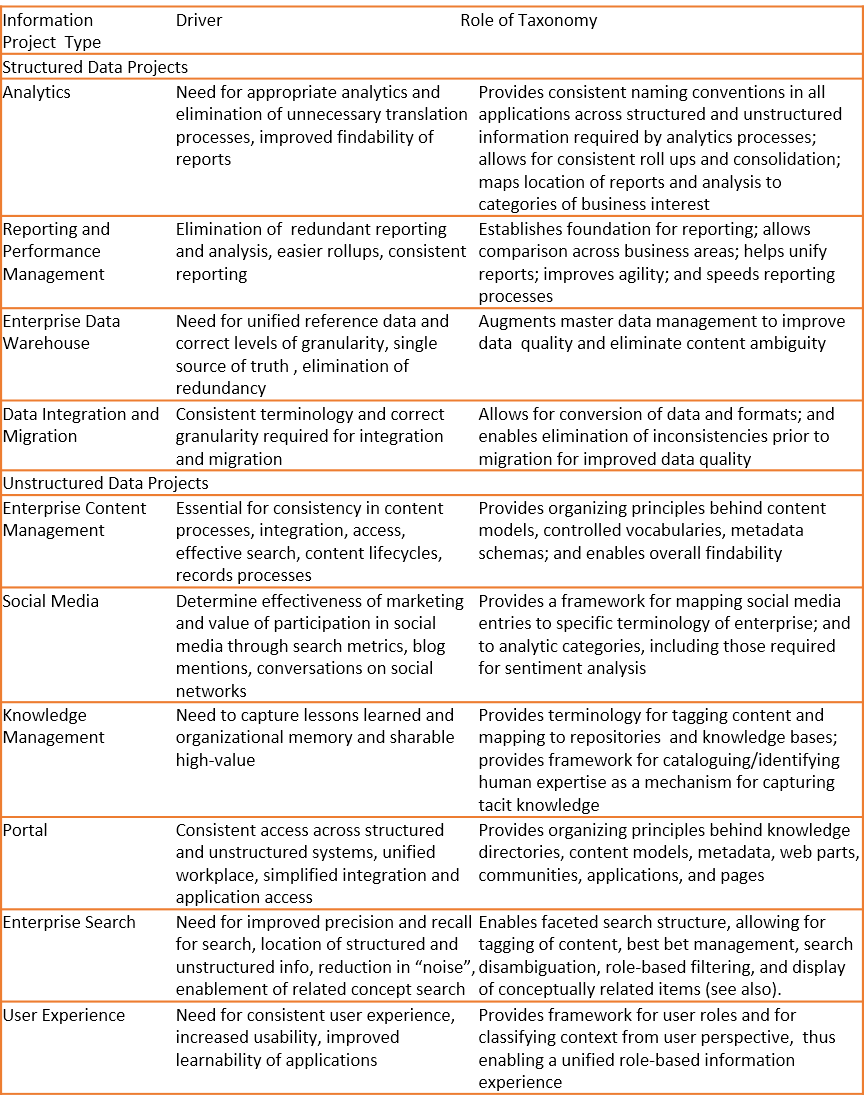In part one of this series, I explored how effective access to and, integration of, information enables businesses to receive more value from IT investments. This second installment addresses the role played by enterprise taxonomy in turning information into actionable knowledge.
Information is actionable when it is understood in context. This means that it is critical to understand how any one piece of information relates to other pieces. Seeing relationships requires a framework for integrating concepts.
Consequently, to make information actionable, organization must develop a common language for concepts, business terms, and information objects. You do this with a taxonomy.
At its most fundamental level, a taxonomy provides a common reference source for unifying concepts, yet most people think of taxonomy as a hierarchy of terms. For instance a geographical taxonomy might list geo-political regions (e.g. states or provinces) under countries, cities under regions, and postal codes under cities. However, in order to ensure that all relevant information is linked to the correct concept, taxonomies are enriched in many ways. Enriched taxonomies may be referred to as thesauri or ontologies, depending on their characteristics and use.
Viewed as a thesaurus, for example, a taxonomy will typically include synonyms or near synonyms. For instance, the concept of “sport coat” might include “blazer” as a near synonym, even though there are formal differences in definition. This allows concepts to be mapped to the specific vocabulary used by different individuals (in Web search) or departments and systems (in enterprise search or data integration) for the same or overlapping concepts.
Enriched taxonomies also show meaningful relations between concepts. These relations enable the high-value business analysis that drives action. Taxonomies enriched with meaningful relations are often referred to as ontologies. A relation of “has accessory” might be used to represent the types of products that are cross-sold with major items of clothing. For instance, the category of shirts with link cuffs might have a “has accessory” link to cufflinks and ties.
Organizations that leverage enterprise taxonomies find many ways to increase the actionable value of information. The following table illustrates the drivers, role and benefit of taxonomy in a variety of information management project types.

Using a consistent conceptual model across all the above will appear daunting for a complex organization. However, if that outcome is part of the CIO’s long term vision, it will possible to move forward incrementally. This requires three key elements:
- A long-term content management strategy with a road map that identifies high value business areas to address near term;
- An set of common tools for managing taxonomy and metadata on an enterprise basis; and
- A governance framework for ensuring that common standards acceptable to the business are defined, implemented and maintained
In part three of this series, I will discusses each of these elements in more detail. Part three also provides a perspective on how these elements can contribute to rather than hinder organizational agility.
***
This Article, by Seth Earley, was published on CIOUPDATE.COM on August 26, 2011.
